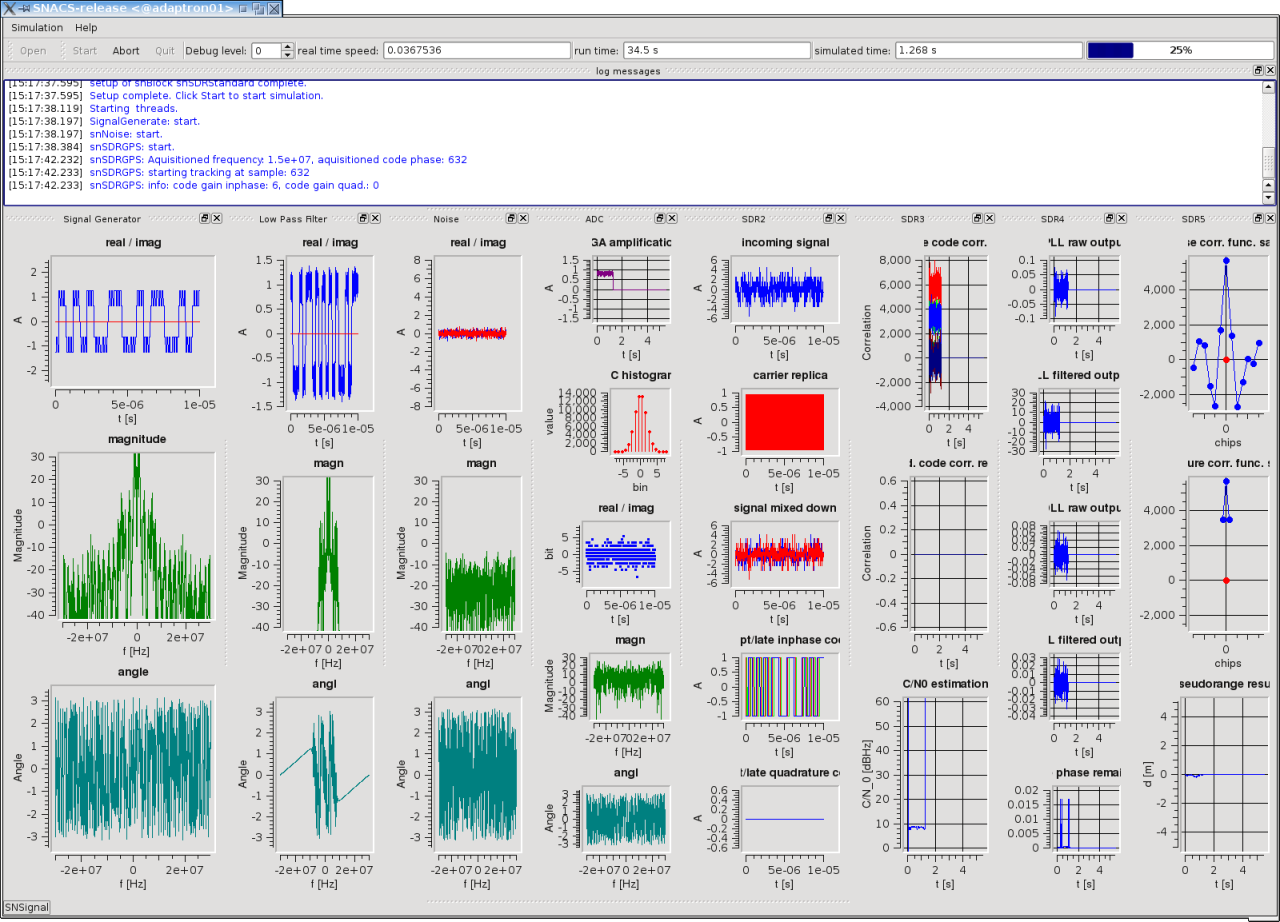SNACS can also be used to generate and track the new binary offset carrier (BOC) modulated Galileo signals. Due to SNACS flexibility, the two signal types for generation and tracking don't have to be the same necessarily.
For example, the signal definition for signal generation could be the CBOC(6,1,1/11) signal as transmitted by (future) Galileo satellites:
signal = {
inphase = {
code = "E1B";
prn = 1;
modulation = "CBOC(n1,n2,p)";
n1 = 6.0;
n2 = 1.0;
p_numerator = 1.0;
p_denominator = 11.0;
};
};
Of course it is possible to use the same CBOC signal for tracking. But we can track this signal also as BOC(1,1) signal, to test a lower receiver complexity, for example. Then, we use a different signal definition block for the "snSDRStandard" aquisition and tracking module:
signal = {
inphase = {
code = "E1B";
prn = 1;
modulation = "BOC(n,m)";
n = 1.0;
m = 1.0;
subcarrier_phasing = "sin";
data_type = "none";
};
};
You can start it by running
cd snacs/trunk/release ./SNACS-release -f ../../examples/example_07/example_07_cboc.cfg
This is a screenshot of the running simulation:

You can use the MATLAB script plot_snacs_results_example07.m to plots the results:

This is the complete SNACS configuration file:
 1.8.5
1.8.5